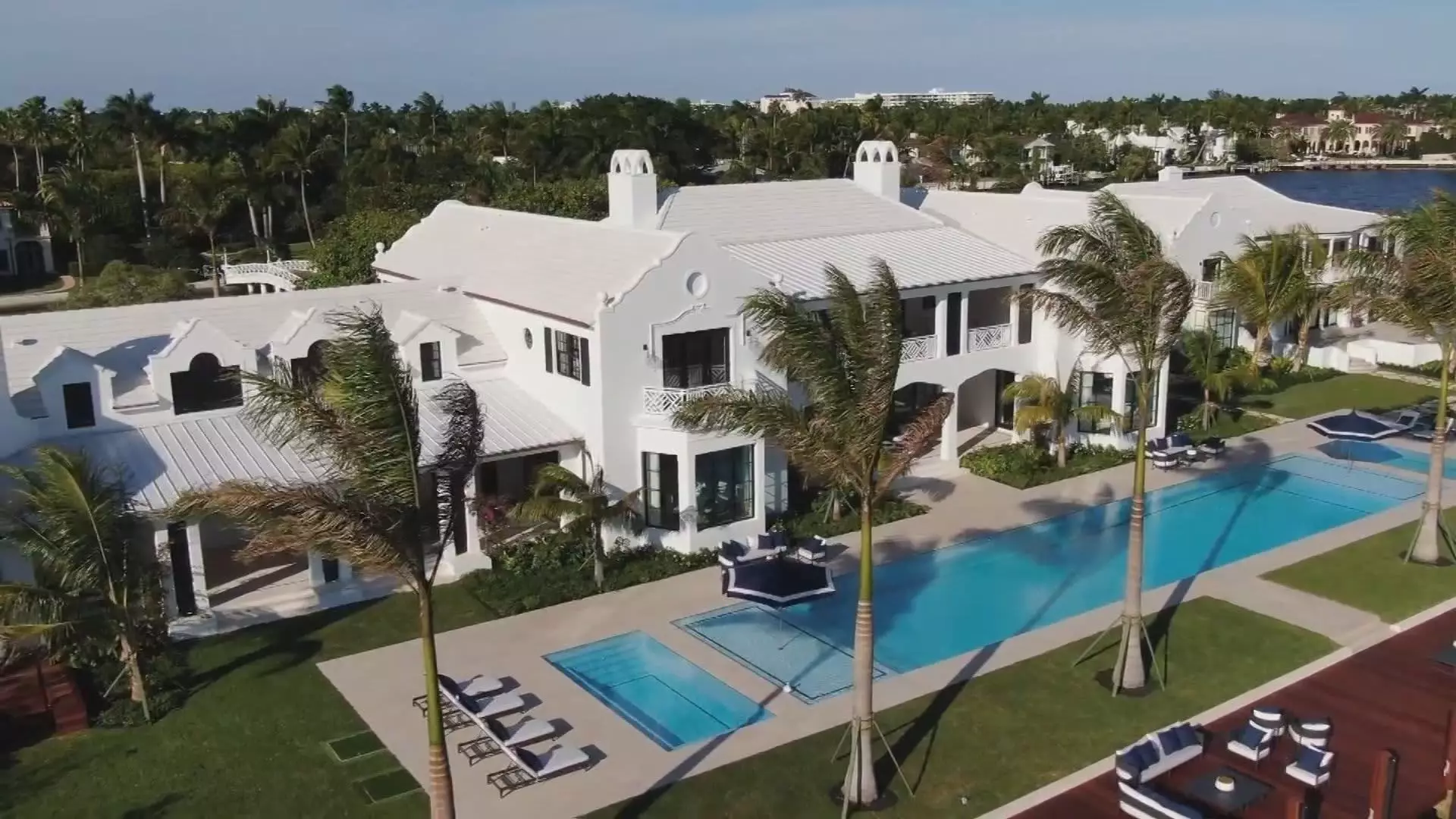The luxury real estate market is experiencing a transformative phase, characterized by contrasting trends across various cities globally. The latest data highlights dramatic sales increases in select high-net-worth areas like New York, Miami, and Palm Beach, while other regions, particularly those with mature markets such as London, have experienced significant declines. Through a comprehensive analysis of these phenomena, we can uncover the forces at play in the ultra-luxury property segment.
Recent reports indicate a remarkable rise in ultra-luxury home sales within targeted U.S. markets, particularly during the second quarter of the year. For instance, Palm Beach witnessed a staggering 44% increase in sales of homes priced at $10 million or more, while Miami and New York recorded jumps of 27% and 16%, respectively. In stark contrast, many other global luxury markets are struggling, with Knight Frank noting an overall decline of 4% in ultra-luxury transactions worldwide.
This phenomenon raises critical questions about the factors contributing to the resilience of markets like New York and Miami. It appears that these cities have become hotspots for wealthy investors seeking both lifestyle and potential returns on investment. Their appeal has been bolstered by favorable tax situations and a booming economy, which is driving demand despite the broader cooling trend in luxury sales elsewhere.
In the competitive landscape of ultra-luxury real estate, New York continues to dominate with a total of 72 transactions exceeding $10 million—its highest count in two years, according to the report. Miami follows with 55 transactions, while Los Angeles and Palm Beach lag slightly behind with 42 and 36, respectively. However, Los Angeles did not fare as well, experiencing a significant decline of 29% in ultra-luxury sales due to the introduction of a “mansion tax” that imposes a 5.5% fee on properties sold above the $10 million mark.
The presence of such taxes can be pivotal in either fostering or deterring ultra-luxury transactions. In this instance, the mansion tax seems to have resulted in a cooling effect for Los Angeles, while cities like Miami, with no similar restrictions, have reaped the benefits, capturing attention from ultra-high-net-worth individuals.
Remarkably, there were some jaw-dropping sales in the ultra-luxury category. A notable transaction involved a $150 million purchase for Palm Beach’s only private island, reportedly acquired by Australian financier Michael Dorrell. Such sales illustrate the boundless aspirations of ultra-wealthy buyers who are willing to pay astounding prices for unique properties that often serve as status symbols.
Despite the cooling performance in many luxury markets post-2021, there remains a core group of affluent buyers who continue to pursue exclusive and rare properties. Liam Bailey, from Knight Frank, asserts that the substantial wealth creation experienced globally has underpinned the surge in super-prime sales, especially in transforming markets like Dubai, Palm Beach, and Miami.
On an international scale, the report revealed that Dubai has emerged as a leader in ultra-luxury real estate, amassing 85 sales exceeding $10 million in just the second quarter. The city’s rise can be attributed to its appealing tax policies and regulatory environment, drawing the ultra-rich from various regions seeking favorable investing conditions. While sales have dipped recently, the overall trajectory has been one of phenomenal growth since only recorded 23 such sales in 2019.
However, not all luxury markets are thriving. London’s ultra-luxury segment has faced one of the steepest declines globally, with a 47% drop in sales attributed to concerns over impending tax increases for affluent residents. This underscores the reality that evolving governmental policies can have immediate and profound effects on luxury real estate markets.
While interest rates have been falling globally, presenting potential benefits to prospective buyers, the future of ultra-luxury sales remains uncertain. Analysts caution that while the current landscape may be favorable, sustained growth hinges upon economic stability and shifts in fiscal policy that could impact wealth distribution and consumer confidence. The luxury real estate market, with its unique nuances and varying regional performances, will continue to serve as a barometer for broader economic sentiments moving forward.

